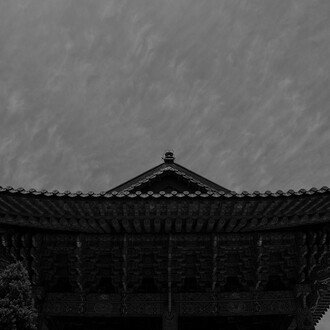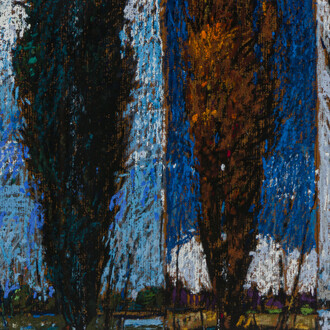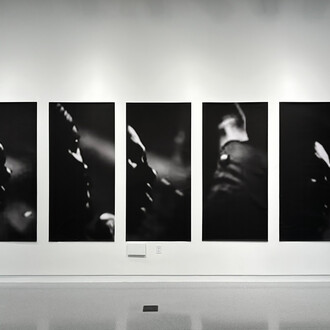Friedman Benda is pleased to present Formation, Italian studio Formafantasma’s first gallery exhibition in the United States, opening to the public on June 6th. Known for delving into the ecological, historical, political, and social forces shaping contemporary design, the studio now presents a new body of work that addresses the relationship between furniture, the domestic sphere, and the concept of the archetype in design.
With a focus on the roles objects play within the home, Formation examines the elementary units that form an archetype. Made of Cherry wood, each piece begins with the most fundamental unit of cabinetmaking—the plank. The tension between transforming this material into something that feels both familiar and contemporary lies at the heart of the exhibition. The lighting elements feature rectangular LED panels, with proportions that evoke the familiar screens of mobile devices and laptops. As the studio states, “this pursuit is subtly informed by a reverence for the Shaker community, Frank Lloyd Wright, and George Nakashima—makers and designers who shaped their own aesthetic and philosophical foundations. The Shakers’ approach to utility and transcendence is mirrored in the collection’s essential forms and its use of Cherry wood, a material deeply embedded in American cabinetmaking. Wright’s synthesis of craft and technology, and Nakashima’s reverence for timber as a living entity, find echoes in the collection’s interplay of warm wood and brushed aluminum—a material more often associated with contemporary digital devices.”
Textile elements also play a significant role in the collection. Each of these details subtly references domestic traditions often overlooked in design history, evoking the quiet craftsmanship historically associated with women’s labor. The inclusion of textiles in Formation, both poetic and practical, serves as a reminder that the domestic sphere is not merely a functional setting but one rich in memory, care, and the quiet interventions that shape our sense of home.
With what the studio calls a ‘restrained aesthetic,’ the exhibition creates a domestic space defined not by spectacle, but by reflection. Showing a mastery of the discipline through familiar typologies and attention to detail, Formafantasma weaves together design sensibilities and materials to assert a language that is distinctly its own. Formation explores how domestic artifacts evolve over time, shaped by changing technologies and cultural shifts, and invites us to rethink our relationship with objects. This collection offers a space where past and present converge—"not to mimic nor reject history, but instead to expand upon it," say Andrea Trimarchi and Simone Farresin.
















